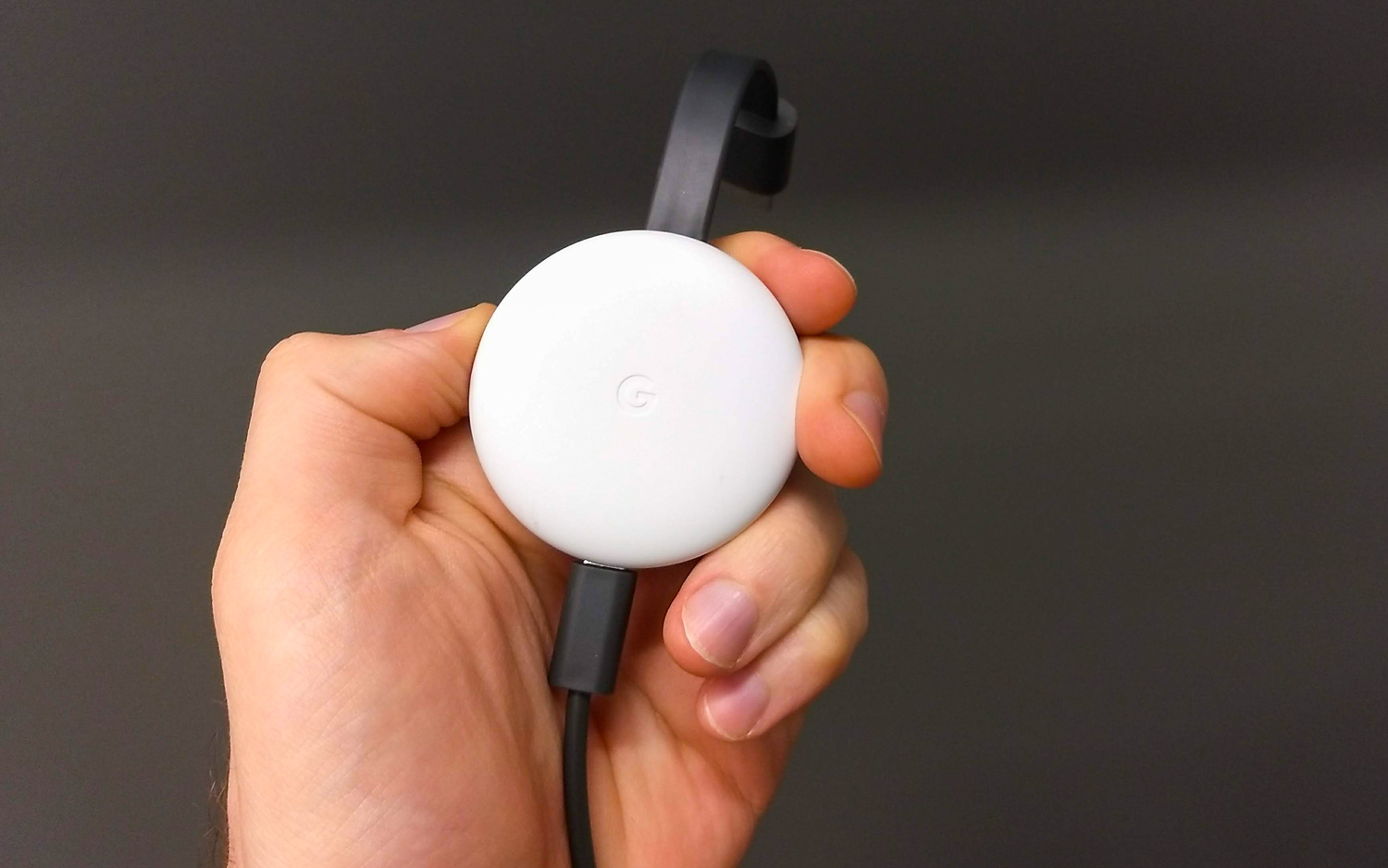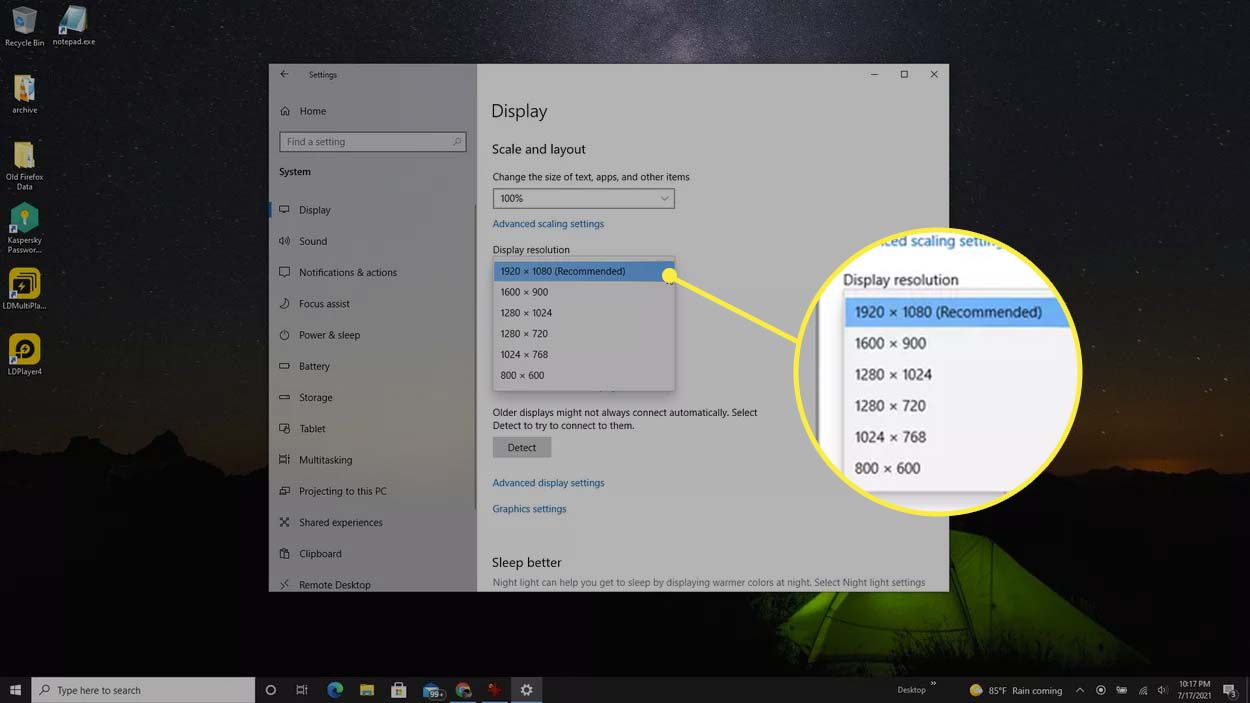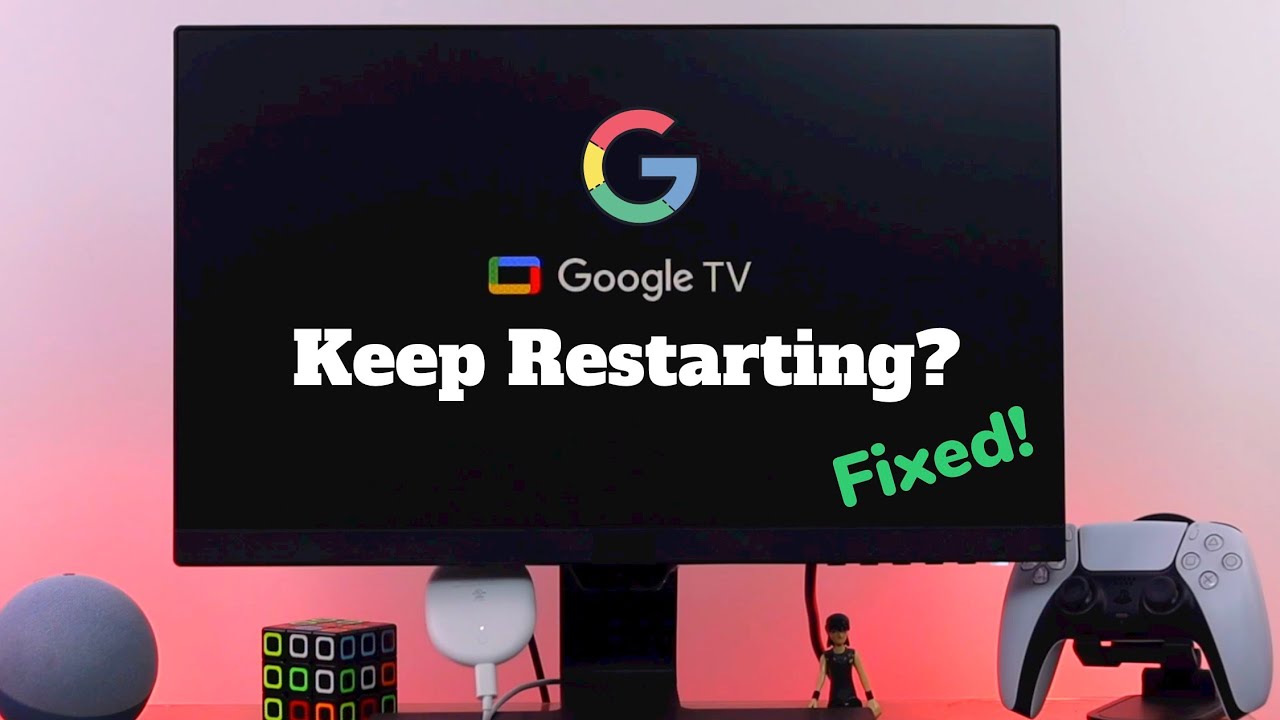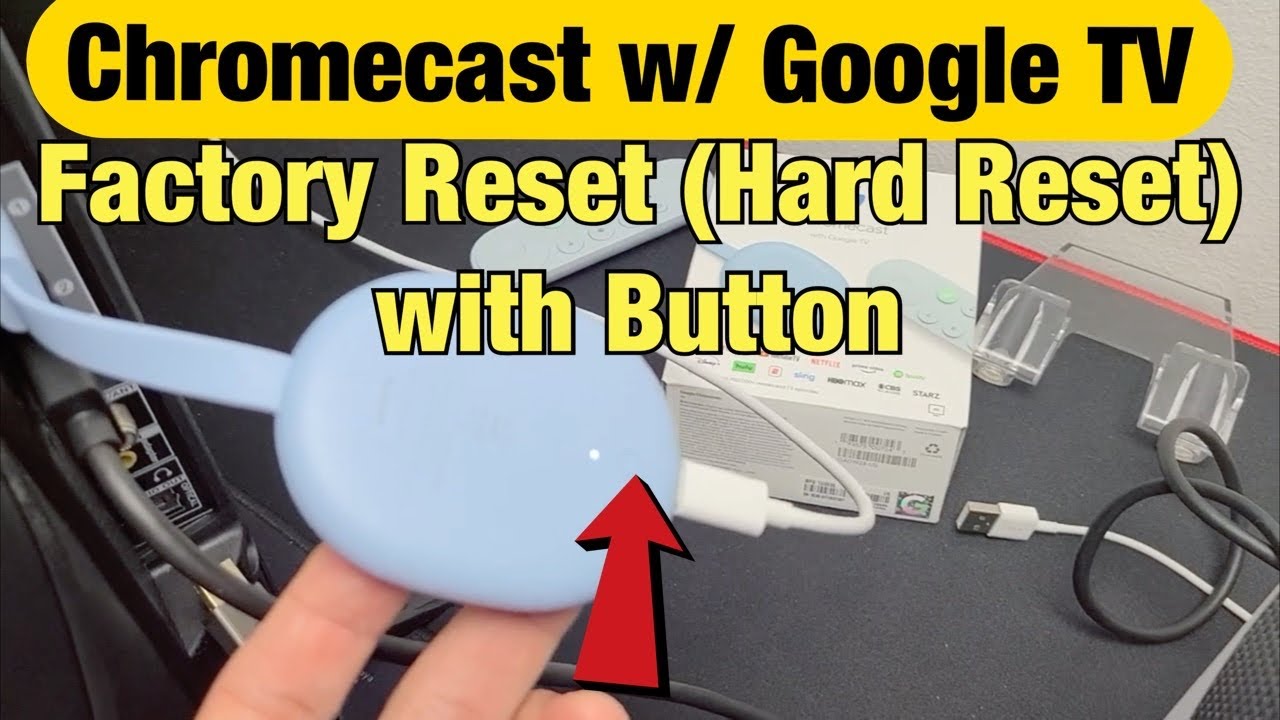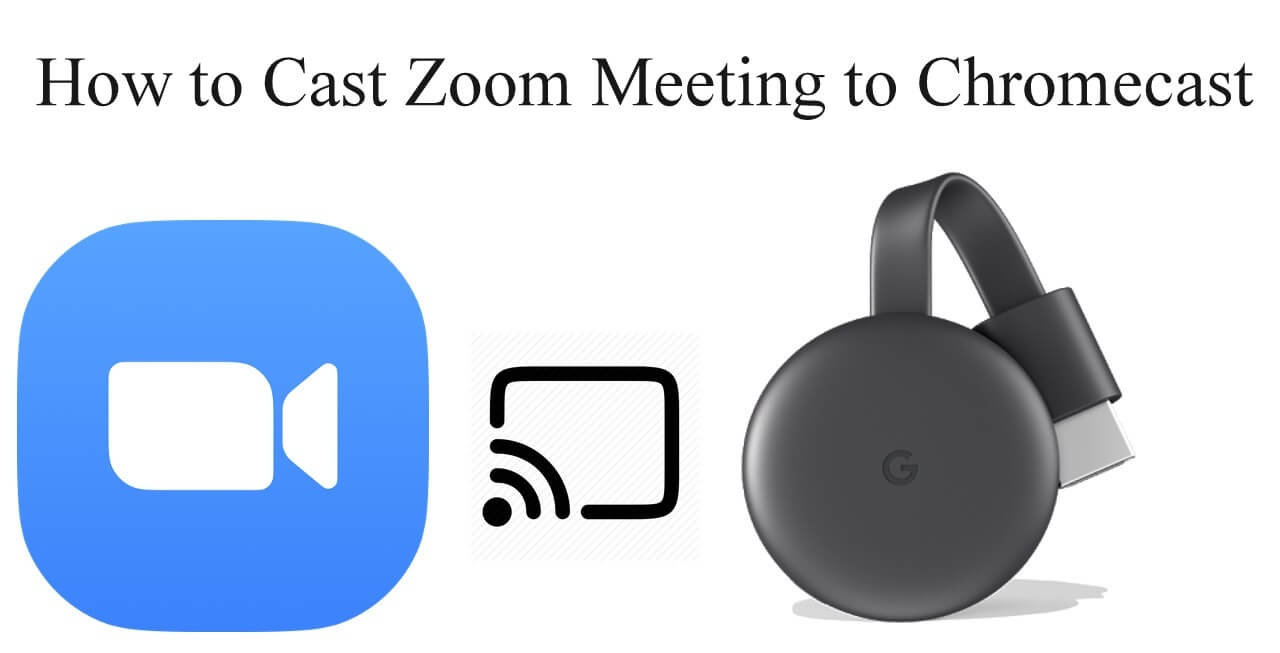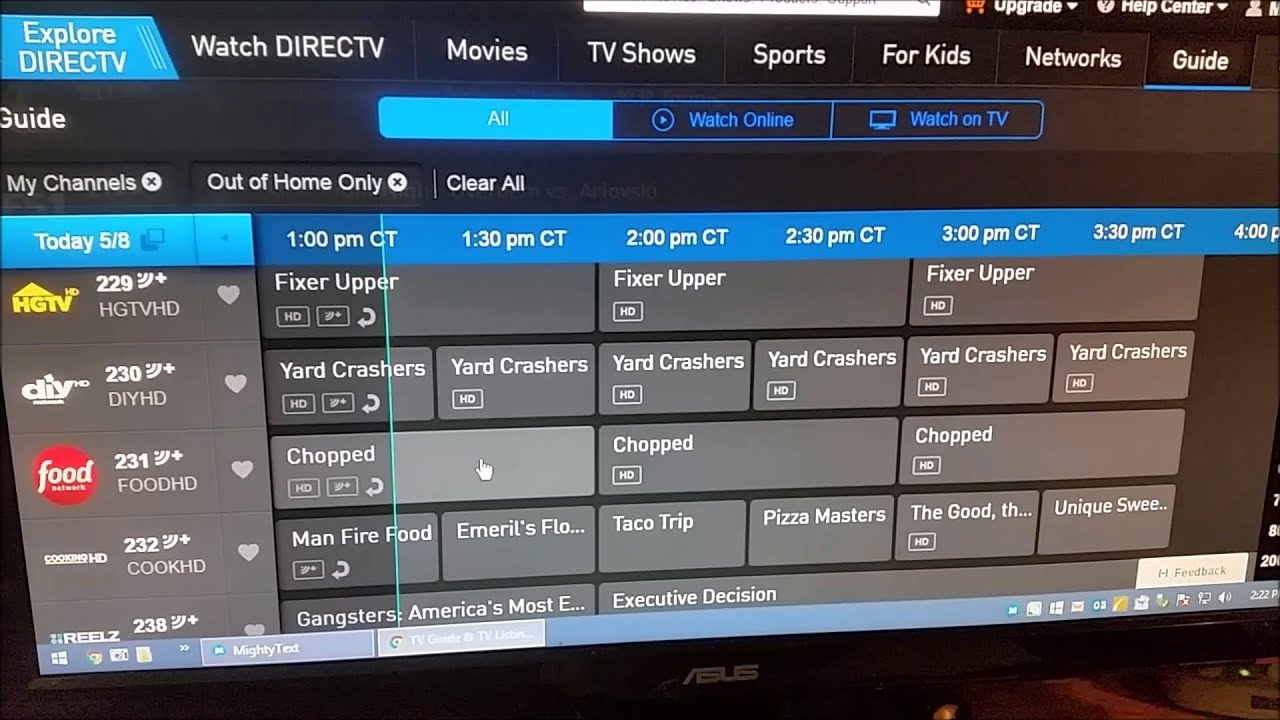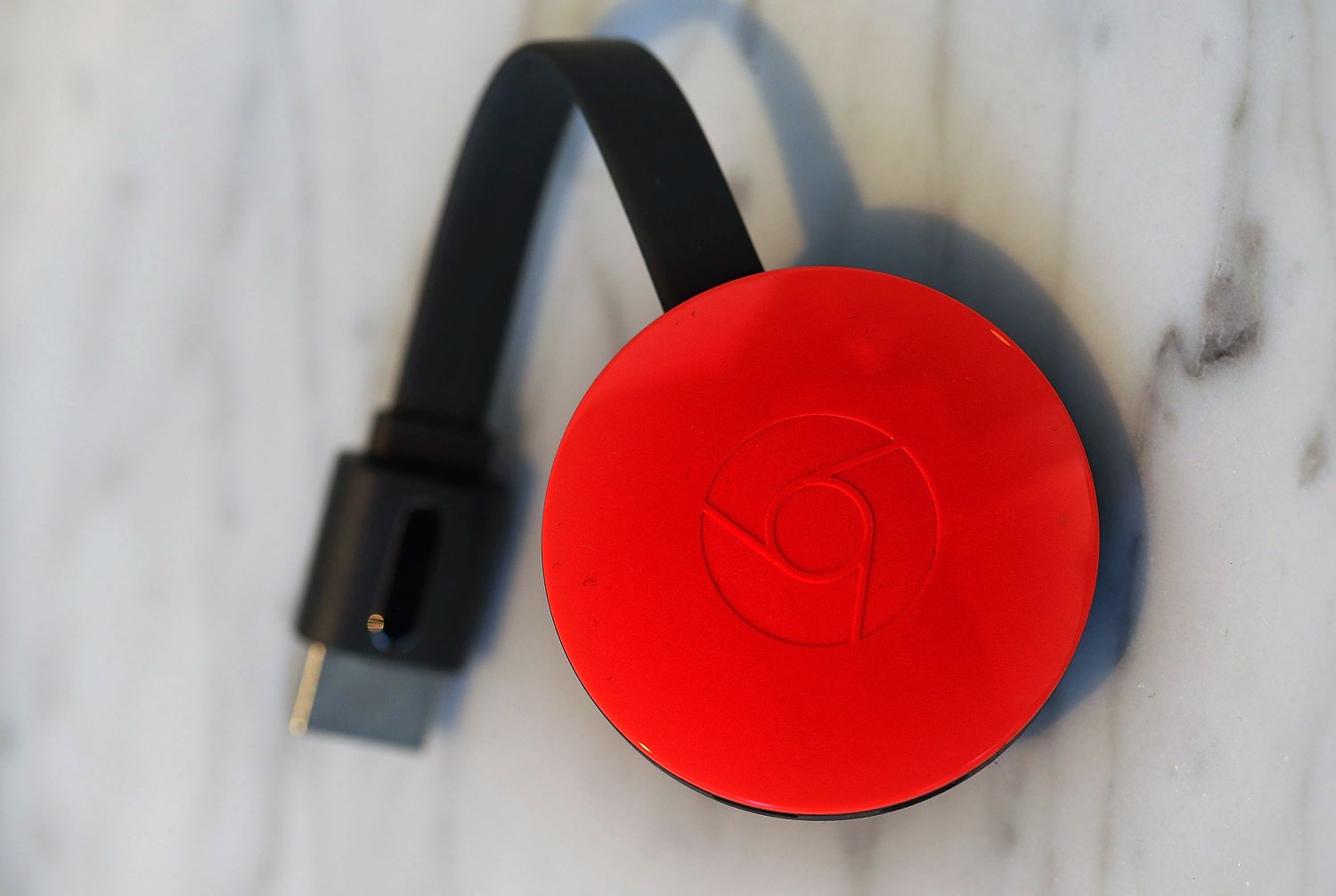Introduction
Chromecast, a media streaming device developed by Google, has revolutionized the way we consume entertainment in our homes. With its ability to cast your favorite movies, TV shows, and music from your smartphone, tablet, or computer to your television, Chromecast offers a convenient and immersive viewing experience.
However, despite its popularity, some users may encounter issues where Chromecast does not work as expected. This can be frustrating, especially when you’re looking forward to enjoying your favorite content on the big screen. In this article, we will explore some common reasons why Chromecast may not be functioning properly and offer troubleshooting solutions to help you get back to streaming without any hassle.
Before we dive into the troubleshooting tips, it’s important to note that Chromecast requires a stable internet connection, a compatible device, and the latest firmware to function optimally. It’s also worth checking if the app you’re trying to cast from supports Chromecast. Now, let’s explore some of the common issues that may be preventing Chromecast from working.
Common Issues
When encountering issues with Chromecast, it’s helpful to identify the common culprits that could be causing the problem. Here are a few common issues that users may face:
- Insufficient Power: Chromecast requires a stable power source to function properly. If you’re using a USB port on your TV to power the device, it might not provide enough power. Consider using the provided power adapter or a powered USB hub to ensure sufficient power supply.
- Wi-Fi Connectivity Issues: Chromecast relies on a stable Wi-Fi connection to stream content. If your Wi-Fi signal is weak or experiencing interference, it can affect the performance of Chromecast. Try moving your router closer to the Chromecast or consider using a Wi-Fi booster to enhance the signal strength.
- Firmware Updates: Like any other device, Chromecast requires regular firmware updates. These updates not only provide new features but also address any bugs or performance issues. Make sure your Chromecast is running the latest firmware version by checking for updates in the Google Home app.
- Compatibility Issues: While Chromecast is compatible with a wide range of devices and operating systems, there may still be some compatibility issues. Ensure that your device and the app you’re using to cast from are both supported by Chromecast. If not, consider using alternative devices or casting methods.
- App-specific Problems: Some apps may have specific issues with Chromecast, such as compatibility problems or casting errors. If you’re experiencing issues with a particular app, try force closing the app, clearing its cache, and restarting your device before attempting to cast again.
These are just a few common issues that you may encounter when using Chromecast. In the following sections, we will explore additional troubleshooting steps to help you resolve any problems you may face and get your Chromecast back up and running smoothly.
Insufficient Power
One of the common reasons why Chromecast may not work properly is insufficient power supply. Chromecast requires a stable power source to function optimally. While it is designed to be powered directly through a USB port on your TV, this power source may not always provide enough power.
If you are experiencing issues with Chromecast, especially if it keeps disconnecting or has trouble casting, it’s worth ensuring that it is receiving enough power. Here are a few steps you can take to address insufficient power issues:
- Use the provided power adapter: Instead of relying on the USB port on your TV, use the power adapter that came with your Chromecast. This adaptor is designed to provide the necessary power for the device.
- Consider a powered USB hub: If the power adapter doesn’t resolve the issue, you can try using a powered USB hub. This will ensure that Chromecast receives a stable and consistent power supply, even if the USB port on your TV is unable to provide sufficient power.
- Check the USB port: If you prefer to power Chromecast through your TV’s USB port, make sure the USB port is functioning correctly. Some USB ports may not provide enough power, particularly older or low-power ports. Try using a different USB port on your TV, if available.
- Avoid using HDMI extension cables: If you are using an HDMI extension cable to connect Chromecast to your TV, it can cause power loss. Remove the extension cable and connect Chromecast directly to your TV to ensure a stable power supply.
By ensuring that Chromecast is receiving sufficient power, you can eliminate one potential cause of the issue. If the problem persists, you can move on to troubleshooting other factors such as Wi-Fi connectivity or firmware updates. Remember, maintaining a stable power supply is vital for the optimal performance of Chromecast.
Wi-Fi Connectivity Issues
Another common issue that can affect the performance of Chromecast is Wi-Fi connectivity problems. Chromecast relies on a stable Wi-Fi connection to stream content from your device to your TV. If there are issues with your Wi-Fi network, it can result in buffering, stuttering, or even complete inability to cast content. Here are some steps you can take to troubleshoot Wi-Fi connectivity issues with Chromecast:
- Check Wi-Fi signal strength: Ensure that your Chromecast is within range of your Wi-Fi router. If it is located too far from the router, the signal may be weak, resulting in poor connectivity. Consider moving the router closer to your Chromecast or using Wi-Fi extenders to improve signal strength.
- Reduce Wi-Fi interference: Nearby electronic devices, walls, and other obstacles can interfere with the Wi-Fi signal. Check for any devices that might be causing signal interference, such as cordless phones or wireless speakers. Additionally, avoid placing your Chromecast near microwave ovens, as they can also disrupt the Wi-Fi signal.
- Restart your router: Sometimes, a simple router restart can resolve connectivity issues. Turn off your router, wait for a few seconds, and then power it back on. This can help refresh the Wi-Fi connection and resolve any temporary glitches.
- Update router firmware: Outdated router firmware can sometimes cause issues with connectivity. Check your router manufacturer’s website for any available firmware updates and install them if necessary. The updated firmware may address any known Wi-Fi connectivity issues.
- Change Wi-Fi channel: If your Wi-Fi network is crowded with many devices, changing the Wi-Fi channel can help reduce interference. You can access your router settings and try switching to a less congested Wi-Fi channel to improve connectivity.
By addressing Wi-Fi connectivity issues, you can ensure a stable connection between your Chromecast and your device, allowing for seamless casting of content. If you have followed these troubleshooting steps and are still experiencing connectivity problems, you may need to consider other factors like firmware updates or compatibility issues.
Firmware Updates
Regular firmware updates play a crucial role in ensuring the optimal performance of your Chromecast. These updates not only bring new features and improvements but also address any bugs or issues that may be affecting its functionality. If your Chromecast is not working correctly, it’s essential to confirm that it is running the latest firmware version. Here’s how you can check for and update the firmware on your Chromecast:
- Open the Google Home app: Start by launching the Google Home app on your smartphone or tablet.
- Select your Chromecast device: Tap on the “Device” icon, usually located in the upper-right corner of the screen, to access the list of available devices. Choose your Chromecast from the list.
- Access device settings: Tap on the gear icon or “Settings” to access the settings specific to your Chromecast.
- Check for updates: Look for the “Firmware update” or “Check for updates” option within the device settings. Tap on it to initiate a search for any available firmware updates for your Chromecast. If an update is available, follow the on-screen prompts to download and install it.
- Ensure a stable internet connection: While updating firmware, it’s crucial to have a stable internet connection. Connect your device to a reliable Wi-Fi network to ensure uninterrupted download and installation of the update.
Updating the firmware on your Chromecast ensures that you have the latest features, bug fixes, and performance optimizations. It is recommended to regularly check for firmware updates to keep your Chromecast up to date.
If you have confirmed that your Chromecast is running the latest firmware version and you are still experiencing issues, you may need to explore other potential causes for the problem, such as compatibility issues with apps or devices.
Compatibility Issues
While Chromecast is compatible with a wide range of devices and operating systems, there may be instances where compatibility issues arise. These issues could prevent Chromecast from working correctly or limit its functionality. If you’re experiencing problems with Chromecast, it’s crucial to ensure that your device and the app you’re using to cast from are both supported by Chromecast. Here are a few steps you can take to address compatibility issues:
- Check device compatibility: Confirm that the device you’re trying to cast from is compatible with Chromecast. Most smartphones, tablets, and computers running Android, iOS, Windows, or macOS should be compatible. However, older devices or those running outdated operating systems may have limited compatibility. Verify the compatibility requirements on the official Chromecast support pages.
- Verify app compatibility: Not all apps support Chromecast casting. Check if the app you’re using is Chromecast-compatible. Many popular streaming apps like Netflix, YouTube, and Spotify offer Chromecast support, but some less popular or niche apps may not. If the app does not support Chromecast, you may need to explore alternative casting options.
- Use alternate devices: If you’re unable to cast from a particular device, try using a different device to see if it resolves the compatibility issue. For example, if you’re experiencing difficulties casting from your smartphone, try casting from a tablet or computer instead.
- Use supported casting methods: If you’re using a web browser on your computer to cast, ensure that the browser supports Chromecast casting. Google Chrome is the recommended browser for seamless casting. If you experience issues with other browsers, switch to Google Chrome.
- Check for app updates: If you’re experiencing compatibility issues with a specific app, ensure that the app is up to date. Developers often release updates to address bugs and improve compatibility with casting devices.
By verifying device and app compatibility and following the steps above, you can troubleshoot and address any compatibility issues that may be affecting your Chromecast experience. If you have confirmed compatibility and are still experiencing issues, you may need to consider other factors such as Wi-Fi connectivity or firmware updates.
App-specific Problems
While Chromecast is designed to work seamlessly with various streaming apps, there can be instances where you may encounter app-specific problems. These issues may range from compatibility glitches to casting errors within a particular app. If you’re experiencing difficulties with a specific app while casting, here are some troubleshooting steps you can try:
- Force close the app: Close the app and relaunch it. Sometimes, apps can encounter temporary glitches that hinder casting. By force closing the app, you refresh its state and may resolve the issue.
- Clear app cache: Clearing the app cache can help resolve any caching-related issues that may be affecting the casting function. Go to the device settings, find the app in question, and clear its app cache. Keep in mind that this may log you out of the app and erase any saved preferences.
- Check for app updates: Developers regularly release app updates to address bugs and improve performance. Make sure you have installed the latest version of the app on your device. Updating the app may fix any casting-related problems.
- Restart the device: Sometimes, a simple device restart can resolve app-specific issues. Restart your device, relaunch the app, and try casting again. This can help clear any temporary issues that may be affecting the app’s casting functionality.
- Report the issue to the app developer: If you have tried the above steps and are still experiencing problems with a specific app, consider reporting the issue to the app developer. They may be able to provide assistance or offer a future update to address the casting issues.
By following these troubleshooting steps, you can address app-specific problems that may be preventing smooth casting from the app to your Chromecast. If the issue persists, it’s essential to explore other potential causes, such as Wi-Fi connectivity or compatibility issues.
Router Firewall Settings
The firewall settings on your router can sometimes interfere with the functionality of Chromecast, causing casting issues or preventing the device from connecting to your network. If you suspect that the router firewall is affecting your Chromecast’s performance, you can try adjusting the settings to resolve the problem. Here are a few steps to troubleshoot router firewall issues:
- Access router settings: Open a web browser on a device connected to your Wi-Fi network and enter the IP address of your router in the address bar. This IP address is usually listed on the back of the router or in the manual. Sign in to your router settings using the administrator credentials.
- Disable firewall temporarily: Locate the firewall settings within the router configuration interface. Temporarily disable the firewall and save the changes. This will help determine if the firewall is causing the issue.
- Test Chromecast: With the firewall temporarily disabled, attempt to cast to your Chromecast from a compatible device. If the casting works without any issues, it indicates that the router firewall was indeed causing the problem.
- Adjust firewall settings: If disabling the firewall resolves the issue, you can adjust the firewall settings to allow Chromecast to communicate through the firewall. Look for options like “Allow specific ports” or “Port forwarding” within your router settings. Refer to the Chromecast support documentation or contact your router manufacturer for guidance on the specific ports that need to be opened for Chromecast.
- Enable firewall with adjusted settings: Once you have adjusted the firewall settings to accommodate Chromecast, re-enable the firewall and save the changes. Test casting to ensure that the adjusted settings allow for proper communication between your Chromecast and other devices on your network.
It’s important to note that disabling or adjusting firewall settings can potentially expose your network to security risks. Therefore, it is advisable to consult the support documentation provided by your router manufacturer or seek assistance from their customer support team when making changes to firewall settings.
By adjusting router firewall settings to allow Chromecast communication, you can ensure a smooth and uninterrupted casting experience. If the issue persists even after adjusting the firewall settings, you may need to explore other potential causes such as Wi-Fi connectivity or compatibility issues.
Guest Mode
Chromecast offers a convenient feature called “Guest Mode” that allows users to cast content to your Chromecast without needing to connect to your Wi-Fi network. This is particularly useful when you have guests who want to cast to your Chromecast without sharing your Wi-Fi password. However, the Guest Mode feature can sometimes cause issues with casting. If you’re experiencing problems with Chromecast, it’s worth checking if Guest Mode is enabled and troubleshooting accordingly. Here’s how you can address Guest Mode-related issues:
- Disable Guest Mode: Open the Google Home app on your device and select your Chromecast device. Tap on the “Settings” or gear icon, and look for the Guest Mode option. Disable Guest Mode if it is currently enabled. This may resolve any casting issues caused by the Guest Mode feature.
- Ensure devices are on the same network: Chromecast and the device you’re casting from must be on the same Wi-Fi network for successful casting. If Guest Mode is disabled and you’re still having trouble casting, make sure both devices are connected to the same network and try again.
- Restart your Chromecast: Sometimes, a simple restart can resolve issues related to Guest Mode or other software glitches. Go to the Google Home app, select your Chromecast device, and tap on the “Settings” or gear icon. Choose the option to restart your Chromecast. After the restart, try casting again.
- Check for firmware updates: Ensure that your Chromecast is running the latest firmware version. Sometimes, firmware updates address known issues, including problems related to Guest Mode. Use the Google Home app to check for any available updates and install them if necessary.
- Reset your Chromecast: If all else fails, you can try performing a factory reset on your Chromecast. Keep in mind that this will erase all settings and data on your Chromecast, so it should be a last resort. To reset your Chromecast, press and hold the reset button on the device for about 25 seconds or until the LED indicator starts flashing. After the reset, set up your Chromecast again and see if the casting issues are resolved.
By following the steps above, you can troubleshoot issues related to Guest Mode on Chromecast. Guest Mode can be a convenient feature, but it may sometimes cause casting issues. If the problem persists even after attempting these troubleshooting steps, it’s essential to explore other potential causes such as Wi-Fi connectivity or compatibility issues.
Casting from Unsupported Sources
While Chromecast offers compatibility with a wide range of apps and streaming platforms, there may be instances where you encounter issues when attempting to cast content from unsupported sources. Not all websites or apps are designed to be casted to Chromecast, so it’s important to identify if the source you’re trying to cast from is supported. If you’re experiencing difficulties with casting from a particular source, here are a few steps you can take to troubleshoot the issue:
- Confirm source compatibility: Ensure that the website or app you’re trying to cast from supports Chromecast casting. Check the official Chromecast website or the app’s documentation to verify compatibility.
- Look for cast button: When using a supported app or website, look for the cast button within the app or on the webpage. This is usually represented by the Chromecast icon and is generally located in the media playback controls. If you don’t see the cast button, the source may not support casting to Chromecast.
- Try screen mirroring: If the source you’re trying to cast from doesn’t have native Chromecast support, you can try using the screen mirroring feature. This allows you to mirror your device’s entire screen to your Chromecast, including unsupported apps or websites. To enable screen mirroring, open the Google Home app, select your Chromecast device, tap on the Cast Screen button, and follow the instructions to mirror your device’s screen.
- Explore third-party apps: There are third-party apps available that can expand the casting capabilities of Chromecast. These apps can enable casting from sources that aren’t officially supported. However, exercise caution when using third-party apps and ensure they are reputable and safe to use.
- Consider alternative casting methods: If casting from a specific source is not possible, you can explore alternative methods to watch the content on your TV. This may include connecting your device directly to the TV using an HDMI cable or using a different streaming device that supports the specific source you want to cast from.
While Chromecast provides extensive compatibility, there may be limitations when casting from unsupported sources. By following the steps above, you can determine if the source you’re trying to cast from is supported and explore alternative options if necessary. If you’re experiencing casting issues even with supported sources, it’s important to consider other potential causes such as Wi-Fi connectivity or compatibility issues.
Factory Reset
If you have tried various troubleshooting methods and are still experiencing persistent issues with your Chromecast, performing a factory reset can be a last resort to resolve the problem. Resetting your Chromecast will restore it to its original factory settings, erasing all settings and data. Here’s how you can perform a factory reset:
- Locate the reset button: On your Chromecast device, you will find a small reset button. The location of the reset button can vary depending on the model, but it is usually located on the side or the back of the device.
- Press and hold the reset button: Use a paperclip or a similar tool to press and hold the reset button for about 25 seconds or until the LED indicator on the Chromecast begins to flash.
- Release the reset button: Once the LED indicator starts flashing, release the reset button. Your Chromecast will reset and begin the process of restoring its factory settings.
- Set up your Chromecast again: After the factory reset, you will need to set up your Chromecast as if it were a new device. This involves connecting it to your Wi-Fi network, signing in to your Google account, and selecting your preferences within the Google Home app.
A factory reset can be an effective solution if you have exhausted all other troubleshooting methods and are still experiencing persistent issues with your Chromecast. However, keep in mind that performing a factory reset will erase all settings and data on your Chromecast, so it should only be done as a last resort.
If the factory reset does not resolve your issues, it may be necessary to contact Chromecast support or explore other potential causes such as compatibility issues or network connectivity problems. They can provide further assistance in troubleshooting and resolving any persistent issues you may be facing with your Chromecast.
Conclusion
Chromecast is a versatile and convenient device that allows you to stream your favorite content on your TV. However, like any technology, it may encounter issues that can hinder its performance. In this article, we have explored various common issues that can arise with Chromecast and provided troubleshooting steps to help you resolve them.
From insufficient power supply to compatibility issues, Wi-Fi connectivity problems, and app-specific glitches, we have discussed each issue in detail and provided steps to address them. By following these troubleshooting methods, you can overcome most of the common problems that may arise with your Chromecast.
It’s important to note that Chromecast requires a stable internet connection, compatible devices, and the latest firmware to function optimally. Additionally, using supported apps and casting from compatible sources ensures a seamless experience. Troubleshooting steps such as adjusting router settings, disabling Guest Mode, and performing a factory reset can help address more complex issues.
However, if you have attempted these troubleshooting methods and are still experiencing problems with your Chromecast, it may be necessary to contact Chromecast support or seek assistance from the relevant device or app manufacturer. They can provide further guidance and help resolve any persistent issues you may be facing.
In conclusion, by following the troubleshooting steps provided in this article, you can overcome the common issues and ensure a smooth and enjoyable Chromecast experience to stream your favorite content on the big screen.







